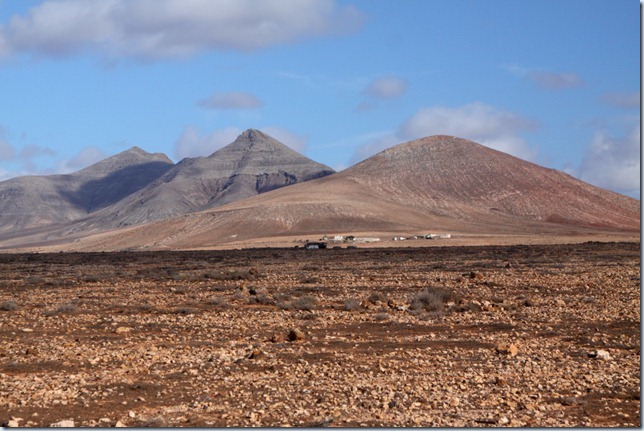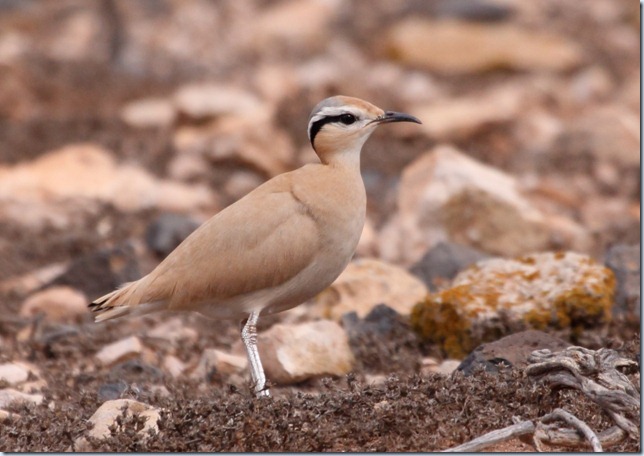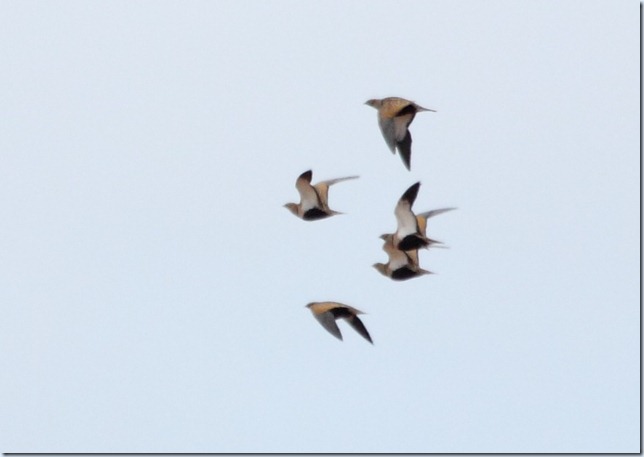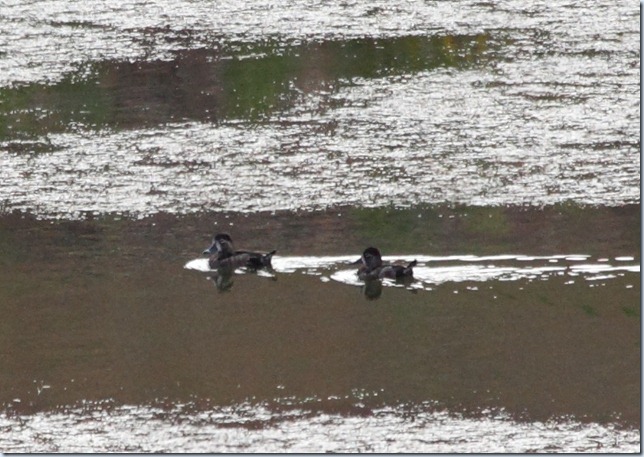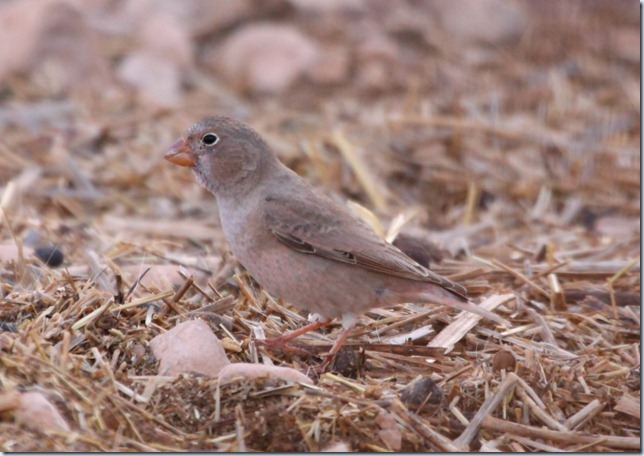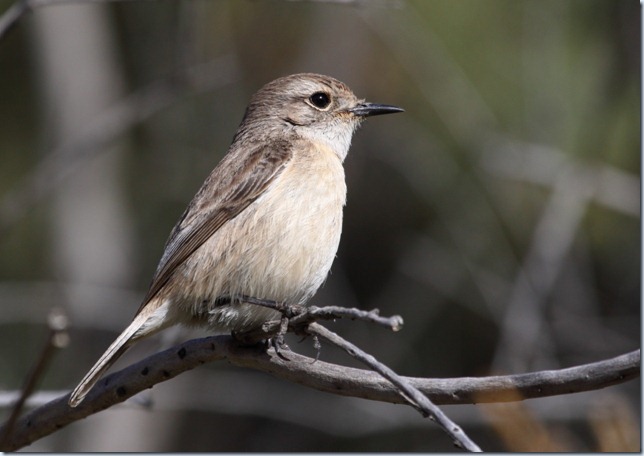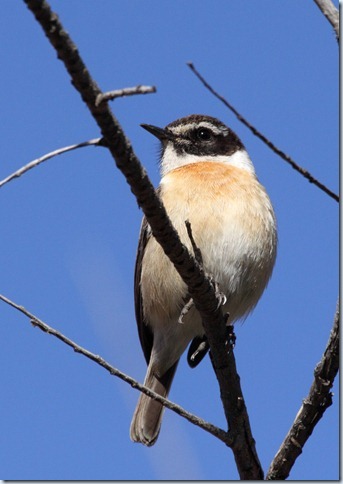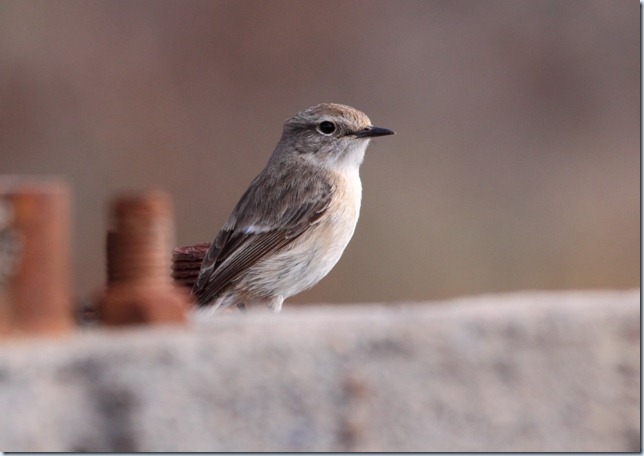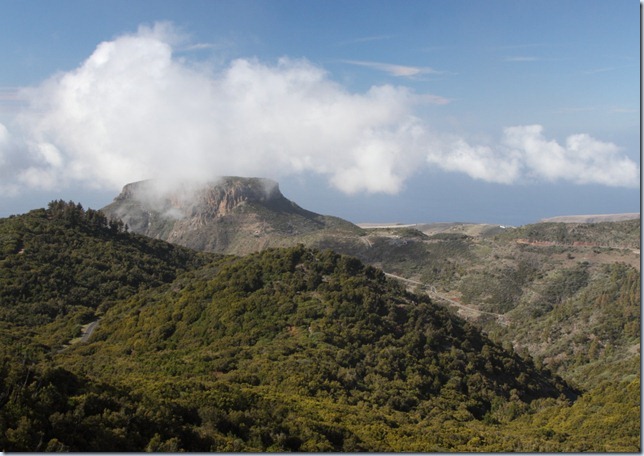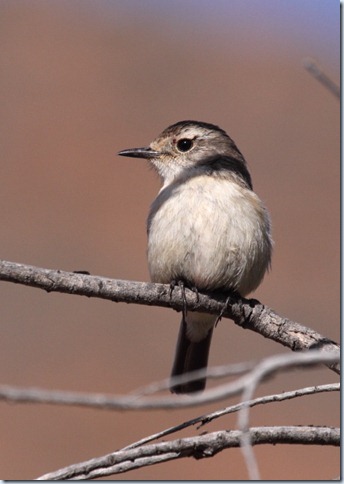OK, so the title gives the game away for anyone still puzzled by yesterday’s mystery photos. The ever-observant RB had it right: Suzanne and I spent Christmas in the Canary Islands. And the mystery bird? If you can’t work it out from the destination, I’ll return to that later in this post…
Over 12 days, we toured around quite a bit, starting with four days on Fuerteventura, then taking an internal flight over to Tenerife. In the middle of our stay here, we took the RO-RO ferry over to La Gomera and spent three days here over Christmas itself.
We’ll write up a full trip report with site details and a complete trip list ASAP, but in the mean time, the next few posts will concentrate on the best photos from the various islands.
Fuerteventura, as the image above suggests, is largely covered by stony desert and low rocky mountains; fresh water and therefore anything more than low-lying scrubby vegetation is at a premium. We spent most of our time either searching for desert speciality species, or checking the few areas of water where the range of birds was wider. The few coastal resorts are a bit grim, so although we stayed in a suite in one of these (Caleta de Fustes), we were out and about pretty much all day every day.
Although we spent a good few hours seeing not a lot, in the end we managed to clean up on all the ‘target species’ in one magic session on the plains near the Embalse de Los Molinos. First, as we drove in down the dusty approach track, a few Cream-coloured Coursers were running alongside:
I reckon these are just superb birds – always on the move, charismatic, and often pretty confiding for photos. They also look and sound great in flight, so when you’re stood in the middle of nowhere and pick up a few flying over it’s guaranteed to put a smile on your face. Arriving at the end of the track, I was delighted to find a raptor perched out on the plain – a lucky encounter with a Barbary Falcon. It clearly showed rufous markings on the back of the head, and had a paler mantle tone than would be expected of Peregrine, though I gather hybrids are now thought to occur on the islands.
But I’d seen coursers and falcons before, in Morocco, and my number one target proved harder to find. We had already looked unsuccessfully at Costa Calma and la Oliva for Houbara Bustard, before I started scanning the rocky plain east of the reservoir, more in hope than expectation. These wandered into view…
My initial thought when I found the first bird was of some sort of weird domesticated turkey-type creature, before the brain kicked in and I realised that Houbara really are that small! Over the course of the next hour or so, we determined that there were at least two pairs of bustards wandering around in a fenced goat enclosure. Although they remained too distant for good photos, and disappeared all too easily in what appeared completely open habitat, scope views were excellent on a rather grey and cloudy day.
While standing around enjoying these, a couple of groups of Black-bellied Sandgrouse flew past – bonus! Large flocks of Lesser Short-toed Lark also buzzed around, easily a hundred strong.
On the reservoir, waterbirds included close on 200 Coot, 120+ Ruddy Shelduck, 6 Teal, 2 Wigeon, Green and Common Sandpipers… and two rather less expected visitors from the USA: female Ring-necked Ducks.
These had been around for a while, so I couldn’t claim genuine surprise, but American vagrants are always good to see in Europe. Apparently a Lesser Scaup had been seen a few days previously, too, but we couldn’t find this.
On our way back out of the site, we paused to scan the hordes of sparrows by the goat farm in Las Parcelas, hoping for one more desert species. It took a little while, and we only saw two, but eventually Trumpeter Finches were found and photographed.
And finally, what of the mystery bird? Yesterday’s pic illustrated a female Canary Islands Chat. In fact, this one:
These are actually the most notable species on the entire trip, in a world listing context, since they’re only found on Fuerteventura, and the total population is apparently not very well known – less than 20,000 individuals, and possibly much less. (See info from BirdLife International, illustrating the variance between different survey results.)
We encountered these at a number of sites, including Embalse de Los Molinos, the Barranco de Gran Valle on the Jandia peninsula, Barranco de la Torre, the Fimapaire valley east of La Oliva, and finally Vega de Rio Palmas, where the most confiding birds posed for these photos. While the females are strikingly pale, almost grey and white, the males are very smart – rather like you imagine a cross between a Stonechat and a Whinchat would look.
